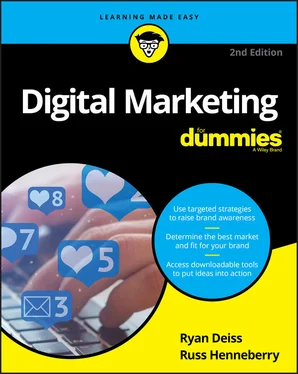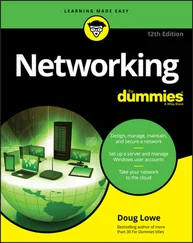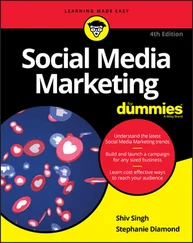1 ...7 8 9 11 12 13 ...19
Avoiding an Optimization Mistake
As you begin to optimize your customer journey, your instinct may be to approach it from the beginning and start with Step 1: generating awareness. But that’s not where you want to start. In fact, the awareness stage is the last place you want to start when optimizing your customer journey.
Why?
If you start from the beginning — as the saying goes — you’re pouring more water into a leaky bucket. All the work you’re doing to optimize the beginning steps of the customer journey will be for nothing if you have holes later in the journey that are causing your customers to get stuck or not convert at all.
To avoid this pitfall, you don’t want to focus your optimization efforts on the beginning of the journey. Instead, you’ll start toward the end of the journey.
When optimizing your customer journey, it’s best to start at the ascend stage (Step 6). Start here with the perspective of, “How do I increase the average customer value? How do I remove the bottlenecks that are causing the customer to get stuck?” By plugging any holes in the ascension stage, you’ll be able to maximize your profit. And with more profit, you’ll be able to invest more into your journey (and not send leads and customers into a leaky bucket).
When you’ve maximized the ascension stage, work backwards.
Optimize your excite stage (Step 5).
Then optimize your convert stage (Step 4).
Then the subscribe stage (Step 3).
Followed by the engage stage (Step 2).
And finally, ’optimize the awareness stage (Step 1).
After you’ve worked backwards and optimized all of the beginning stages of the customer journey, you then turn your attention to optimizing the final two stages — brand advocates (Step 7) and brand promoters (Step 8), looking for ways to generate more of each.
 This is important and the key to optimizing your customer journey: work on one stage at a time. Focus all of your efforts on that one stage before you move onto the next one. Don’t start a new stage until you’ve fully optimized the current stage you’re working on. In the same vein, don’t work on multiple stages simultaneously. Fix one stage at a time. If you jump around from stage to stage or optimize multiple stages at once, you’re likely to miss holes and your optimization will be for nothing. Optimizing only one stage at a time helps you plug all your leaks and remove the bottlenecks for your customer.
This is important and the key to optimizing your customer journey: work on one stage at a time. Focus all of your efforts on that one stage before you move onto the next one. Don’t start a new stage until you’ve fully optimized the current stage you’re working on. In the same vein, don’t work on multiple stages simultaneously. Fix one stage at a time. If you jump around from stage to stage or optimize multiple stages at once, you’re likely to miss holes and your optimization will be for nothing. Optimizing only one stage at a time helps you plug all your leaks and remove the bottlenecks for your customer.
 As you optimize each stage, you’re not just looking for holes you can plug. You’re looking for bottlenecks the customer is facing, things that cause them to get stuck and prevent them from moving onto the next stage in the journey. And you’re looking to remove those barriers so you can plug those holes and get more leads and customers at each stage of the customer journey.
As you optimize each stage, you’re not just looking for holes you can plug. You’re looking for bottlenecks the customer is facing, things that cause them to get stuck and prevent them from moving onto the next stage in the journey. And you’re looking to remove those barriers so you can plug those holes and get more leads and customers at each stage of the customer journey.
Chapter 2
Choosing the Right Marketing Campaign
IN THIS CHAPTER
 Defining the goals of your digital marketing
Defining the goals of your digital marketing
 Utilizing the three main digital marketing campaigns
Utilizing the three main digital marketing campaigns
 Learning which digital marketing campaigns you should employ, and when
Learning which digital marketing campaigns you should employ, and when
D igital marketing is a broad term that can mean anything from posting an image of your product on Facebook to crafting an email subject line to optimizing a blog post for search engine traffic. Digital marketing involves many seemingly disconnected tactics, and that’s what makes this chapter so important.
This chapter helps you understand what a marketing campaign is. We explain the three different types of campaigns and how and when to use them so that you can use these strategies effectively in your digital marketing campaigns.
Every business is interested in generating leads, making sales, retaining the customers they have, and selling them more of the company’s products or services. Achieving each of these goals requires a different approach, however. In this chapter, we help you decide what you want your digital marketing to accomplish by identifying your business objectives, because those objectives are what should dictate the campaigns you construct and, ultimately, the tactics you employ.
Establishing Marketing Objectives
Before you start a blog, open a Pinterest account, or start gathering email addresses, you need to choose your business goals. When you know what you want to accomplish, you’ll be able to direct your energy into the right marketing campaigns and employ marketing tactics that move the needle on the right business metrics.
Here are six common goals that your digital marketing strategy can affect:
Increasing problem and solution awareness: Your online marketing can help prospective customers become aware of something they need, an effect called problem awareness . Your marketing can also make prospective customers aware that your company provides a solution to a problem — called solution awareness . Your objective is to help people realize that you can take them from the “Before” state, in which they have a problem, to the desired “After” state, in which they have obtained a positive solution. (We cover this idea in greater detail in Chapter 1.)
Acquiring new leads and customers: Gaining more leads and customers is a primary objective of most businesses. Without generating new leads and customers, your business will never grow beyond what it is now. You need to bring in new blood in order to scale your business.
Activating leads and customers: If you’ve been in business for more than a few months, you likely have leads and customers who have yet to buy or haven’t bought in a while. You can use your digital marketing campaigns to encourage people to buy from you for the first time, as well as to remind past customers who haven’t purchased from you lately of the value you bring and why they should buy from you again. Your digital marketing campaigns can activate these dormant leads and customers and help keep your business in mind.
Monetizing existing leads and customers: Acquiring new leads and customers is expensive and time consuming. Don’t forget to create digital campaigns intended to sell more products and services to those new leads and customers. Monetization campaigns make upsell, cross-sell, and other types of offers to sell more to your best leads and customers.
Onboarding new leads and customers: New leads and customers deserve special treatment simply because they are new. They need to be taught who you are and how to be successful with what they’ve purchased. To achieve this goal, create content such as welcome emails or welcome packets that tell people how to use your product or service, what they can expect, and where they can go if they need help with their purchase.
Building community and advocacy: To move prospects, leads, and customers beyond a shallow, transactional relationship, you need to build campaigns that create communities of advocates and brand promoters. One of the most effective ways to achieve this advocacy is through social media, such as through a Facebook group or a Twitter page. Here, people can reach out if they have praise for or questions about your product or service. By creating an outlet, you help to cultivate a sense of community for your customer base, which leads to increased satisfaction and loyalty. Find more on social media tactics in Chapter 9.
Читать дальше

 This is important and the key to optimizing your customer journey: work on one stage at a time. Focus all of your efforts on that one stage before you move onto the next one. Don’t start a new stage until you’ve fully optimized the current stage you’re working on. In the same vein, don’t work on multiple stages simultaneously. Fix one stage at a time. If you jump around from stage to stage or optimize multiple stages at once, you’re likely to miss holes and your optimization will be for nothing. Optimizing only one stage at a time helps you plug all your leaks and remove the bottlenecks for your customer.
This is important and the key to optimizing your customer journey: work on one stage at a time. Focus all of your efforts on that one stage before you move onto the next one. Don’t start a new stage until you’ve fully optimized the current stage you’re working on. In the same vein, don’t work on multiple stages simultaneously. Fix one stage at a time. If you jump around from stage to stage or optimize multiple stages at once, you’re likely to miss holes and your optimization will be for nothing. Optimizing only one stage at a time helps you plug all your leaks and remove the bottlenecks for your customer. As you optimize each stage, you’re not just looking for holes you can plug. You’re looking for bottlenecks the customer is facing, things that cause them to get stuck and prevent them from moving onto the next stage in the journey. And you’re looking to remove those barriers so you can plug those holes and get more leads and customers at each stage of the customer journey.
As you optimize each stage, you’re not just looking for holes you can plug. You’re looking for bottlenecks the customer is facing, things that cause them to get stuck and prevent them from moving onto the next stage in the journey. And you’re looking to remove those barriers so you can plug those holes and get more leads and customers at each stage of the customer journey. Defining the goals of your digital marketing
Defining the goals of your digital marketing










